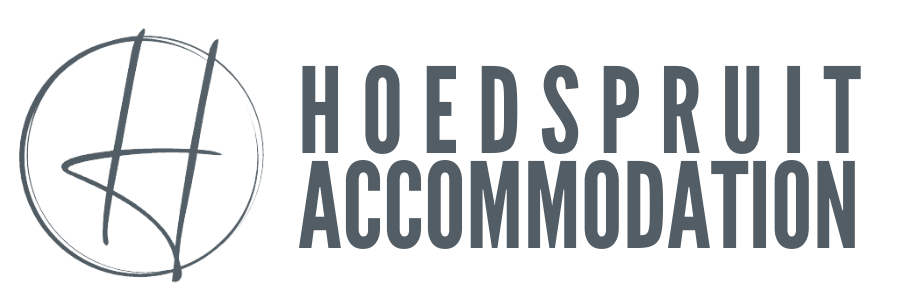Unleashing the Wild Side of Crime: A Stark Reality of Hoedspruit Wildlife Estate
Discover the growing concerns of crime in Hoedspruit Wildlife Estate. Protect your property and seek solutions to keep your community safe. Learn more here.
The untamed wilderness of Hoedspruit Wildlife Estate has attracted the attention and fascination of many, but with this allure comes a stark reality: crime. The fragility of the ecosystem in the face of poaching and smuggling is a serious concern for those dedicated to preserving the natural beauty and diversity of this area.
As we delve into the depths of this issue, it becomes apparent that Hoedspruit Wildlife Estate stands at a crossroads between preservation and exploitation. While efforts have been made to combat crime, there remains much work to be done to ensure that this unique habitat can continue to thrive. Join us as we explore the delicate balance between civilization and nature, uncovering both the challenges faced by those who seek to protect wildlife and their habitats and the hope that exists for a brighter future.
The Allure of Crime in the Wild
The allure of criminal activity in the wild, particularly within the Hoedspruit Wildlife Estate, is a complex phenomenon that stems from a confluence of factors including economic disparities and unregulated access to natural resources. The area's unique blend of wilderness and human habitation creates an environment where illegal activities can flourish undetected. Poachers and smugglers are drawn to the estate's vast expanse of land, which offers ample cover for their illicit activities.
Moreover, the lure of easy money is often too tempting for those struggling to make ends meet. The lack of job opportunities in rural areas forces many individuals to turn to crime as a means of survival. Unfortunately, wildlife trafficking has become one such lucrative option for these individuals. It is estimated that wildlife smuggling generates billions of dollars annually, making it one of the most profitable forms of organized crime in the world.
Lastly, unregulated access to natural resources also plays a significant role in attracting criminal elements. Illegal miners and loggers are known to operate within protected areas like Hoedspruit Wildlife Estate with little regard for environmental laws or conservation efforts. Their actions threaten not only the ecosystem but also local communities who rely on these resources for their livelihoods. To curb this problem effectively requires concerted efforts by law enforcement agencies and conservationists alike.
The Fragile Ecosystem of Hoedspruit Wildlife Estate
Within Hoedspruit Wildlife Estate, the intricate balance of species and their interactions creates a delicate ecosystem that is vulnerable to disturbances. The introduction of crime into this environment has disrupted the natural order of things, causing chaos and confusion among its inhabitants. Poachers targeting rhinos, elephants, and other wildlife have threatened to upset the fragile equilibrium that exists within the reserve.
The consequences of such disruptions go beyond just the loss of individual animals; it can lead to serious ecological imbalances that may take years or even decades to correct. For example, a decline in predator populations can result in an overabundance of herbivores who may then decimate plant life. Similarly, an increase in poaching activity can cause certain species to become extinct or endangered, which could have ripple effects throughout the entire ecosystem.
To protect this delicate balance and preserve the integrity of Hoedspruit Wildlife Estate's ecosystem, it is essential that measures be taken to reduce criminal activities within its borders. By doing so, we can ensure that future generations will continue to enjoy a thriving natural environment where all species coexist harmoniously in their respective niches. The freedom we seek must not come at the expense of destroying what nature has worked so hard to create for millions of years.
The Poaching and Smuggling Problem
Poaching and smuggling activities have disrupted the delicate balance of species interactions in Hoedspruit Wildlife Estate. The illegal killing of animals, such as rhinos and elephants, has caused a decline in their populations and has affected the ecosystem as a whole. This has resulted in an imbalance between predator and prey populations, which can lead to further negative impacts on the environment.
Furthermore, smuggling activities involving wildlife products have also contributed to the decline of certain species within the estate. The trade in ivory, for example, motivates poachers to kill elephants for their tusks. This not only affects elephant populations but also leads to an increase in demand for other illegal wildlife products, such as pangolin scales or rhino horn.
The poaching and smuggling problem is a harsh reality that threatens both the wildlife and humans living in Hoedspruit Wildlife Estate. It is important to address this issue through effective law enforcement measures and education programs aimed at raising awareness about the consequences of these actions. Only then can we hope to restore the balance of species interactions within this fragile ecosystem.
Efforts to Combat Crime at Hoedspruit Wildlife Estate
Efforts to combat illegal activities in this delicate ecosystem have been met with mixed success, but the fight continues. The Hoedspruit Wildlife Estate has implemented various strategies to tackle poaching and smuggling, including increased surveillance and patrols, collaboration with law enforcement agencies and local communities, and education programs aimed at raising awareness about the importance of conservation.
One notable initiative taken by the estate is the use of trained dogs to track down poachers. These dogs are specially trained to detect human scent from various distances and can even recognize individual scents. They have proven successful in apprehending poachers attempting to enter or exit the estate illegally.
Despite these efforts, however, crime remains a persistent problem on the Hoedspruit Wildlife Estate. Poachers continue to target rhinos for their valuable horns, while smugglers look for opportunities to transport illegal goods across borders. Nevertheless, with ongoing efforts by the estate management team supported by law enforcement agencies and other stakeholders, there is hope that this beautiful ecosystem will be preserved for future generations.
The Future of Wildlife Conservation in Hoedspruit
The preservation of the delicate ecosystem in Hoedspruit relies heavily on the implementation of sustainable conservation practices and effective collaboration between stakeholders. The future of wildlife conservation in Hoedspruit will require a multifaceted approach that involves community engagement, education, and innovative technologies. With the increasing threat of climate change and human activities, it is crucial to develop strategies that not only protect wildlife but also enhance their habitat.
One key aspect of future conservation efforts is promoting community involvement in wildlife management. By educating local communities on the importance of biodiversity and providing opportunities for them to participate in conservation activities, we can build a shared sense of responsibility towards protecting wildlife. Furthermore, incorporating cutting-edge technology such as drones, satellite imagery, and data analytics can provide valuable insights into animal behavior patterns and help identify potential threats to their survival.
The future of wildlife conservation in Hoedspruit depends on our ability to adapt to changing circumstances while maintaining our commitment towards preserving biodiversity. It is essential that we continue to collaborate with all stakeholders involved in this effort and embrace innovation as a means to achieve sustainability. Only by working together can we unleash the full potential of nature's beauty and safeguard it for generations to come.
Frequently Asked Questions
What specific types of crimes have been committed at Hoedspruit Wildlife Estate?
Various criminal acts have been reported at Hoedspruit Wildlife Estate, ranging from theft to poaching of endangered species. The severity and frequency of these crimes reveal the vulnerability of wildlife sanctuaries to human exploitation, threatening their very existence.
How do the crimes committed at Hoedspruit Wildlife Estate impact the local community?
The crimes committed at Hoedspruit Wildlife Estate have a significant impact on the local community, causing fear and anxiety. The loss of wildlife also affects the ecosystem and tourism industry. These issues highlight the need for effective security measures to ensure safety for both humans and animals.
What measures are in place to prevent poaching and smuggling at Hoedspruit Wildlife Estate?
Strategic measures are taken to combat poaching and smuggling at Hoedspruit Wildlife Estate. These include 24-hour surveillance, patrols by armed rangers, and collaboration with law enforcement agencies. These efforts aim to protect the wildlife and preserve natural resources for future generations.
Have any individuals or groups been successfully prosecuted for wildlife-related crimes at Hoedspruit Wildlife Estate?
Several individuals and groups have been successfully prosecuted for wildlife-related crimes at Hoedspruit Wildlife Estate. However, discussing this without the context of unleashing the wild side of crime misses the broader issue of increasing criminal activity in wildlife estates.
How does the presence of crime at Hoedspruit Wildlife Estate affect wildlife conservation efforts in the area?
Wildlife conservation efforts in the Hoedspruit area are impacted by crime. The presence of illegal activities such as poaching and trafficking undermines the protection of endangered species, threatening their survival. This jeopardizes the freedom of wildlife to thrive in their natural habitat.
Conclusion
The harsh reality of crime in the wild is a stark reminder of the fragility of ecosystems and the need for vigilant conservation efforts. Hoedspruit Wildlife Estate, a protected area in South Africa, has experienced its fair share of poaching and smuggling activities. However, despite these challenges, there have been concerted efforts to combat these crimes and preserve biodiversity. The future of wildlife conservation in Hoedspruit depends on continued dedication to safeguarding this precious ecosystem.
Despite being a haven for rare species and an important ecological hub, Hoedspruit is not immune to the allure of crime. The high demand for exotic animals and their parts fuels illegal trade networks that threaten both wildlife populations and human safety. Nevertheless, dedicated conservationists are working tirelessly to prevent further harm through anti-poaching measures such as monitoring systems and ranger patrols. In addition, education campaigns aim to raise awareness about the dangers of poaching while promoting sustainable practices.
In conclusion, Hoedspruit Wildlife Estate serves as a poignant example of how human actions can either protect or destroy our natural heritage. The ongoing struggle against criminal activity highlights the urgent need for global cooperation in conserving biodiversity. As we face unprecedented environmental challenges, it is crucial that we recognize our role in shaping the fate of our planet's ecosystems. Only by working together can we unleash the full potential of nature's wild side while ensuring its survival for generations to come.

